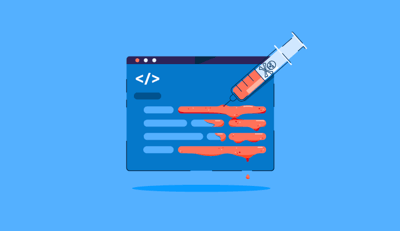October 25, 2023
 by Soundarya Jayaraman / October 25, 2023
by Soundarya Jayaraman / October 25, 2023

Even the most comprehensive security tech stack can fall short of protecting your IT environment from cyberattacks. No, really. Sorry.
You might have firewalls, network security tools, application security software, cloud security systems, backups, data center security software, and end-point protections. And it still might not be enough to stop determined cybercriminals from pushing malicious code onto your applications and network. It was the tenacity of these frauds that led to sandboxing.
Sandboxing is a security measure that you use to code in an isolated, secure environment that mimics an end-user environment. You can run, test, and analyze code without affecting your application, system, or network in any way.
Imagine the sandbox you have in your backyard. You can have fun and build things inside it, but everything you do stays in the box, and nothing can get outside easily. Correct?
In the world of technology, the sandbox is a safe space, like a virtual playground. Sandboxing has many uses, from testing new software applications with your team to letting customers try new features and products. Instrumental in the field of cybersecurity, it provides unrivaled visibility into unknown security threats.
IT teams rely on tools like network sandboxing software and malware analysis tools to isolate and analyze potentially harmful files and network traffic. This will protect their critical infrastructure from any unforeseen vulnerabilities or system failures.
The sandbox function depends on what IT is testing.. A sandbox environment used to test codes for software applications works differently than a sandbox designed to detect malware and zero-day vulnerabilities.
Nonetheless, all sandbox environments perform the following functions.
Sandboxes are controlled and isolated computing environments separate from the critical IT infrastructure. They emulate the end-user environment on devices like desktop, mobile, or other computing devices or operating systems and applications.
Sandboxing creates this virtualized environment using different methods, like a virtual machine (VM), a separate container, or a restricted user account. The virtualized sandbox environment mimics the actual device or OS but is isolated from it. The goal is to make the tested software or code believe it’s interacting with an actual device and OS, even though it's in a simulated environment.
The sandbox controls what the tested software or code can and cannot do inside. It reduces access to critical system resources, like memory, and limits interactions with the host machine.
A sandbox may prevent access to the file system, system memory, or the network in case you are checking an untrusted code for malware. Similarly, if you’re testing new features in the production phase, it prevents changes to your actual software application.
When testing, the sandbox monitors the program and records its features, functions, and behavior details. It documents event logs, network traffic, system, or file registry changes, and memory dumps. If it finds any problems, it flags it to the respective teams, who can work to resolve the issue without affecting the entire system.
Here is a simplified example of how sandboxing in cybersecurity works:
Source: Kaspersky
Developers and engineers use some of these techniques to implement sandboxing technology.
Businesses often see sandboxes as an unnecessary and needless expense. Why add an extra tool to your stack when you already have multiple software platforms?
Cyber threats constantly and rapidly evolve. Hackers and threat groups employ advanced technologies like automation, artificial intelligence (AI), and machine learning (ML) to launch large-scale, targeted attacks.
The attack that used to take months to execute only takes days now. For instance, ransomware only took about 4 days to deploy in 2021. In 2019, it took two months. From advanced malware and web application threats to zero-day attacks and highly damaging supply-chain attacks, many complex attacks work around traditional threat detection methods.
zero-day vulnerabilities detected and disclosed so far this year.
More frequent and sophisticated assaults with ever-expanding attack surface make detection and mitigation difficult for security professionals. Think about this: only a third of companies discover data breaches solely with the work of their own security teams.
Relying on the usual cybersecurity tools isn’t enough to protect against unknown threats, especially in the age of zero-day attacks. This is where the sandbox comes in handy as a layer of proactive cybersecurity.
Sandboxes are integrated with other security systems, like network security software, intrusion detection and prevention systems (IDPS), and email security tools, allowing s organizations to take a more comprehensive approach to security by leaning into the strengths of different security tools.
For example, a sandbox integrated with a secure email gateway analyzes suspicious email attachments before they reach anyone’s inbox.
By incorporating sandboxes with other tools, organizations protect their networks, endpoints, cloud environments, apps, and entire IT ecosystems from a wide range of cyber threats.
In response to increasing cyberattacks, tech companies prioritize security from the beginning of their software development cycle. This evolution to development security operations (DevSecOps) involves security at every stage of software development, from initial design through integration, testing, deployment, and software delivery.
of B2B software buyers require a security assessment prior to software purchase.
This approach makes fixing security issues easier, faster, and less expensive without slowing the development cycle. And DevSecOps gets to run a risk-free landscape to explore, test, and build without fear.
Here’s how sandboxing is used in a software development lifecycle.
 Source: Hardening Azure Applications
Source: Hardening Azure Applications
Developers test and validate new code, applications, or updates in a sandbox that emulates the production environment. They can collaborate with other developers, try out different software configurations, and save any version without affecting the live system. The sandbox is where developers identify bugs and technical issues before software deployment and enhance the overall security posture of their software.
As you research sandboxing, you’ll probably come across some of these common types used for security and software development in the real world.
Sandboxing is helpful for work with browsers, email, and networks. Keep reading for more info on real-life uses.
These sandboxes are designed to analyze and dissect potentially malicious files, software, or links in the sandboxed environment. Security analysts can better understand the behavior and impact of malware without risking the host device's integrity. Today, several anti-malware and anti-virus software tools provide malware analysis sandboxing within their product offering. Malware analysis tools also isolate and investigate attacks in a sandbox environment.
Often used in email security, it scans email attachments in controlled environments to detect and block suspicious code or links before they reach users. They help pinpoint threats that traditional antivirus programs and email filters may miss.
Gmail, for instance, has a security sandbox, where it runs attachments in a virtual environment based on rules set up by IT administrators to detect harmful attachments. If it finds any attachments to be a threat, it automatically sends them to the spam folder.
This type of sandbox runs all web pages and applications you visit via a web browser in a virtual environment and thwarts browser-based exploits using HTML rendering and JavaScript execution, the most popular attack vectors. If an attacker exploits the browser and runs arbitrary HTML or JavaScript code on the machine, the sandbox prevents it from damaging the system.
For example, popular web browsers like Google Chrome, Mozilla Firefox, and Microsoft Edge have set up built-in sandboxes to protect against malicious web content.
This simulates network environments to analyze and block suspicious artifacts traversing the network. Network administrators use them to assess suspicious traffic and assign malware probability and severity scores for further remediation.
This type of sandboxing is typically used for mobile OS and web browsers. It stops apps from giving permissions to prevent hackers from accessing sensitive data or making potentially harmful changes to the system. The two most popular mobile, Android and Apple’s iOS, use app sandboxing to isolate apps from each other and protect the system.
Software development sandboxing has different types based on where they fall in the product lifecycle.
This type make it simple for software developers and individual teams building new features and applications to code in isolated environments. As a copy of the live production environment, it doesn’t affect the actual production environment or the users. Software that comes out successfully from this sandbox moves to the next production stage. Google, Amazon, and Salesforce provide third-parties with a development sandbox environment to test their web apps before releasing them to a wider audience.
Integration sandboxes are priceless since software applications depend on several programs like databases, code libraries, third-party services, or application programming interfaces (API). Integration testing within a sandbox makes certain that the different parts of a software system work together seamlessly before deployment to production environments.
This type of sandboxes help engineers and software testers use the secure environment to evaluate the software’s performance and functionality and debug it before release. The test sandbox replicates real-world scenarios in terms of hardware, software, configurations, data, and users, which testers utilize to find bugs that affect code quality.
Demo sandboxes let end-users demo a new software product or feature. Some companies include it as part of user acceptance testing (UAT) to try out the software and get feedback before it's released widely. Other companies turn to it to help potential customers explore the features and capabilities of a product in a limited environment. Software as a service (SaaS) companies like Chargebee and Moodle offer hands-on product trials with sandbox environments.
Sandboxing is a powerful security technique, but it does stumble in some places. Some of the most common challenges you might encounter are:
Despite these challenges, sandboxing remains a vital security mechanism for finding unknown vulnerabilities and strengthening your cybersecurity posture.
Undoubtedly, sandboxing reinforces security techniques and has established itself as an essential part of any comprehensive security strategy. To be sure, sandboxing is not an all-in-one defense, but it is a crucial tool for any IT team. So whether you’re defending your digital fortress or building new software, play it safe and secure in the sandbox.
Take the next step to safeguard your organization. Learn about intrusion detection system and how it enhances your protection.
Soundarya Jayaraman is a Content Marketing Specialist at G2, focusing on cybersecurity. Formerly a reporter, Soundarya now covers the evolving cybersecurity landscape, how it affects businesses and individuals, and how technology can help. You can find her extensive writings on cloud security and zero-day attacks. When not writing, you can find her painting or reading.
Web applications power our online experience day in and day out. We connect, interact, shop,...
 by Soundarya Jayaraman
by Soundarya Jayaraman
Packed with sensitive data and accessible from anywhere, mobile apps are every hacker's dream.
 by Harshit Agarwal
by Harshit Agarwal
Payment security is mission-critical for any company, especially now, when criminals and...
 by Guillaume Deschamps
by Guillaume Deschamps
Web applications power our online experience day in and day out. We connect, interact, shop,...
 by Soundarya Jayaraman
by Soundarya Jayaraman
Packed with sensitive data and accessible from anywhere, mobile apps are every hacker's dream.
 by Harshit Agarwal
by Harshit Agarwal


